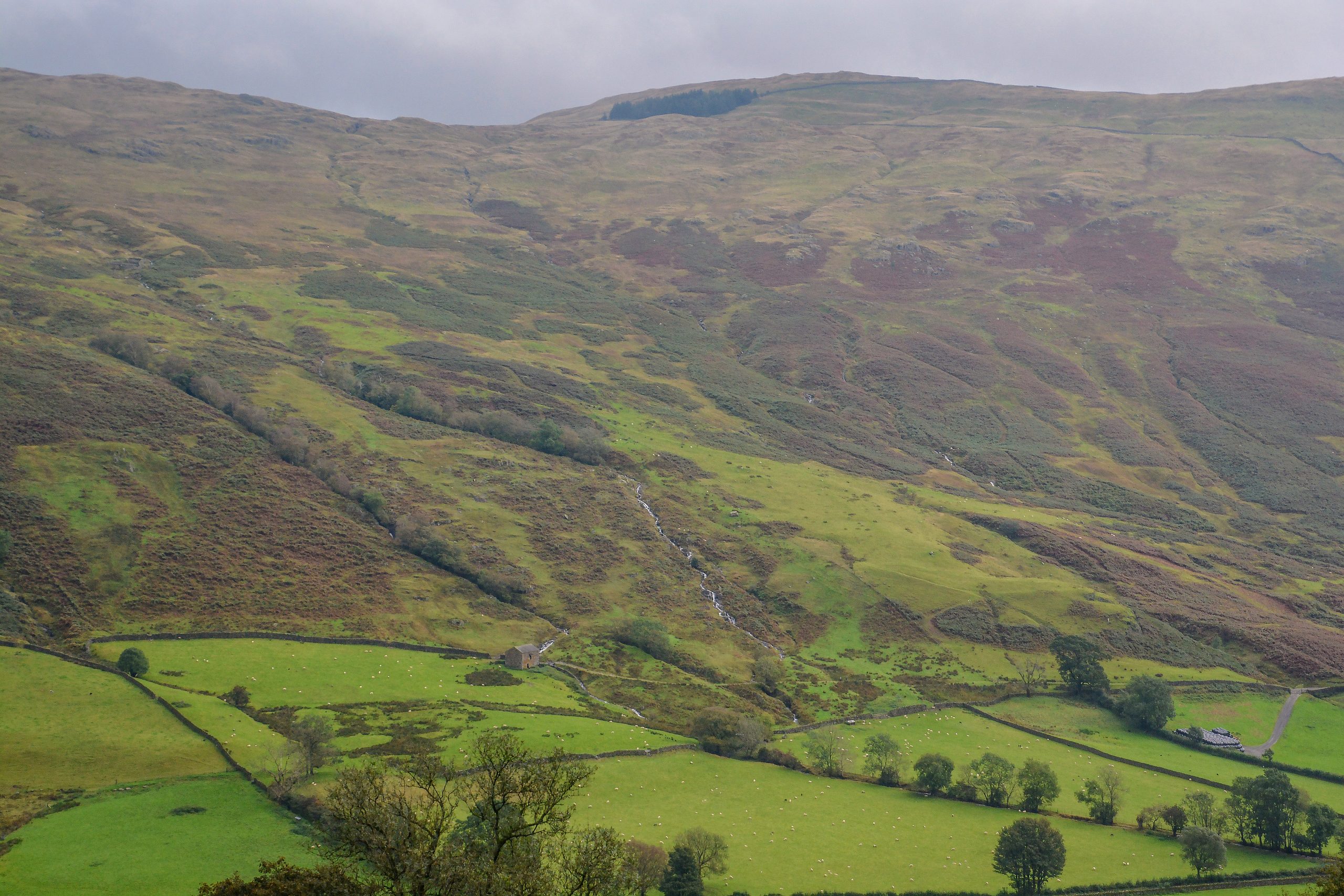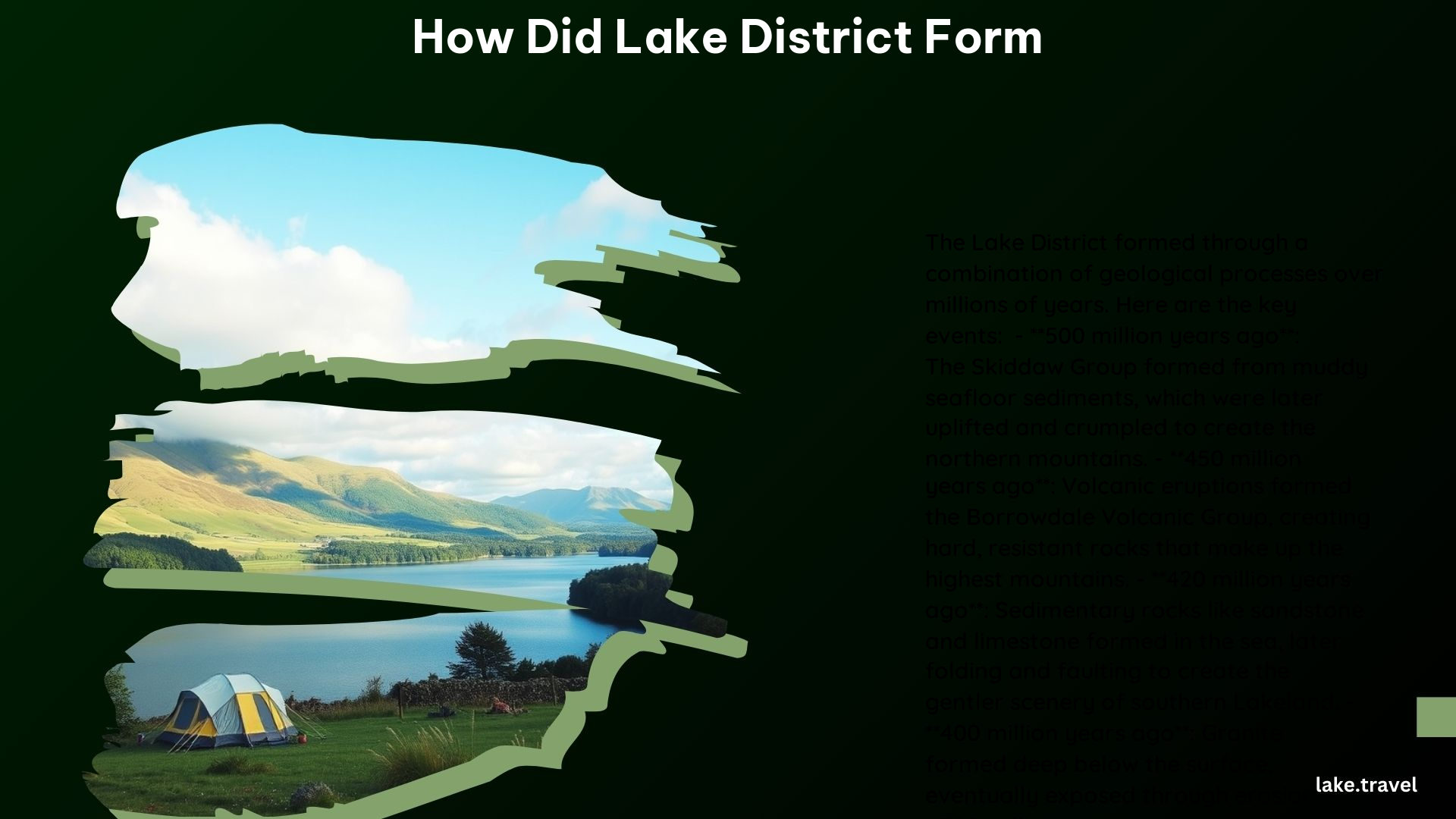The Lake District in England was formed through a combination of geological processes over a period of approximately 500 million years. The region’s unique and varied landscape, with its mountains, lakes, and valleys, is the result of these complex geological events.
Tectonic Plate Collision

Around 500 million years ago, the Lake District was located at the edge of a continent called Laurentia. This continent collided with another continent, Gondwana, causing the rocks in the Lake District to fold and uplift, creating the initial mountainous landscape.
Volcanic Activity

Approximately 450 million years ago, the Lake District experienced a period of intense volcanic activity. This volcanic activity produced the Borrowdale Volcanic Group, a group of rocks that make up the base of the mountains in the region. These hard, resistant rocks have formed the highest and craggiest mountains, such as Scafell, Helvellyn, and the Langdale Pikes.
Erosion by Glaciers
During the last ice age, around 12,000 years ago, glaciers covered much of the Lake District. These powerful glaciers eroded the mountains, carving out the deep U-shaped valleys that are characteristic of the region today.
Sedimentary Rock Formation
Sedimentary mudstones, sandstones, siltstones, and limestone formed in the sea about 420 million years ago. These rocks were later folded and faulted, pushed up, and eroded down to their present levels, forming the gentler scenery of southern Lakeland.
Granite Formation
Huge masses of granite formed about 400 million years ago deep below the Lake District. Erosion has revealed outcrops of this granite in Eskdale, Ennerdale, and at Shap.
Tropical Sea and Limestone Formation
Around 320 million years ago, a tropical sea covered the Lake District. The shell remains of small animals formed limestone, which is visible at Whitbarrow Scar and Scout Scar in the south of the National Park.
The combination of these geological processes has created the unique and varied landscape of the Lake District, making it a popular destination for tourists and nature enthusiasts. The region’s geology has also influenced its cultural and historical development, adding to its appeal.
References:
1. https://www.chimpinvestor.com/post/how-the-lake-district-was-formed-in-three-minutes
2. https://www.lakelandretreats.com/history-of-the-lake-district/
3. https://www.lakedistrict.gov.uk/learning/geology.
